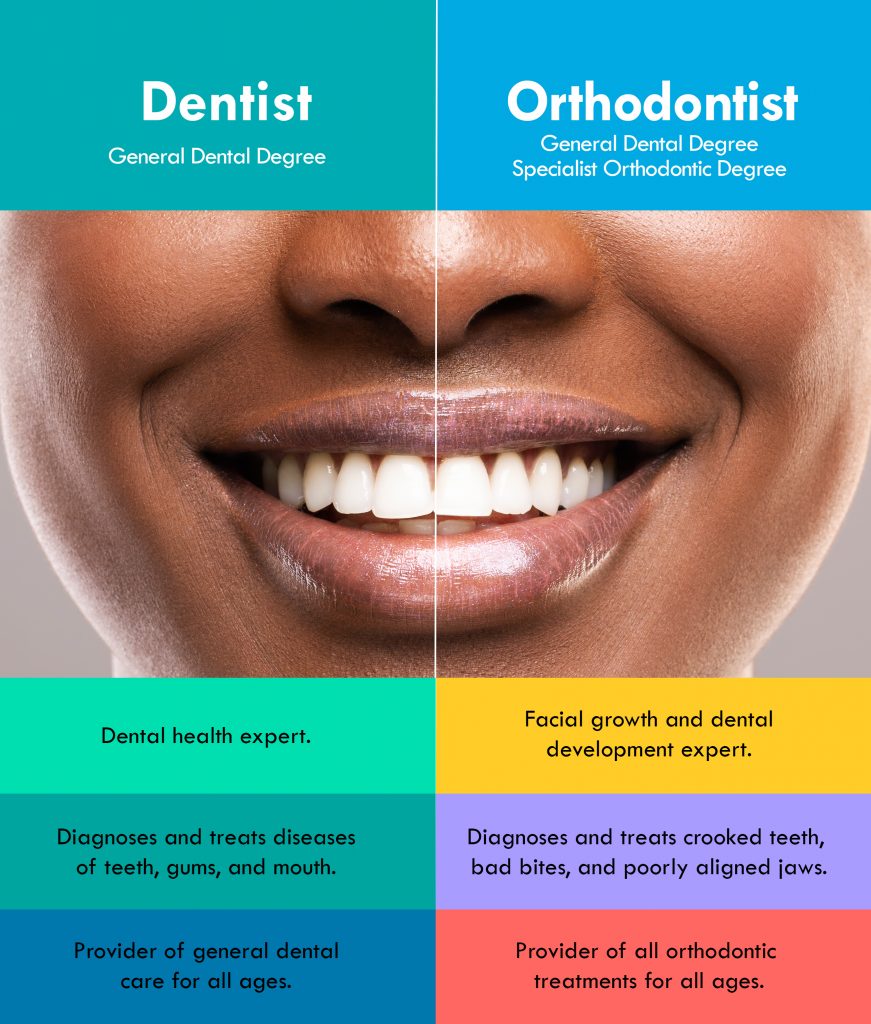Legacy Orthodontics - Questions
Table of ContentsThe Best Strategy To Use For Legacy OrthodonticsSome Ideas on Legacy Orthodontics You Need To KnowThe Single Strategy To Use For Legacy OrthodonticsWhat Does Legacy Orthodontics Mean?The 7-Minute Rule for Legacy Orthodontics
In addition, we use flexible therapy routines, flexible repayment alternatives and a fun, pleasurable experience.An orthodontist is a dental practitioner educated to identify, stop, and deal with teeth and jaw abnormalities. Orthodontists work with people of all ages, from children to grownups.
Malocclusion, or misaligned teeth, can result in dental problems, including tooth decay, periodontal condition, and difficult or uncomfortable chewing. Yet not everyone is birthed with straight teeth. If you have a negative bite or huge areas between your teeth, you might want to consult a dental expert focusing on orthodontic treatment.
What Does Legacy Orthodontics Do?
( Image Credit Scores: DigitalVision/Getty Images) Orthodontists make use of repaired and detachable dental devices, like dental braces, retainers, and bands, to alter the placement of teeth in your mouth. Orthodontic therapy is for oral irregularities, consisting of: Uneven teethBite problems, like an overbite or an underbiteCrowded teeth or teeth that are as well much apartJaw misalignmentThe objective of orthodontic therapy is to improve your bite.
While you could assume of orthodontists as mainly for kids or teenagers who need braces, they can fix dental issues at any type of age. Orthodontists participate in college, oral school, and orthodontic college.
, however not all dental practitioners are orthodontists. They focus on 2 areas: Exactly how to properly and securely move teeth How to correctly guide growth in the teeth, jaw, and faceOnce an orthodontist has actually finished training, they have the choice to end up being board certified.
The Facts About Legacy Orthodontics Revealed
Misalignment, or malocclusion, is one of the most common reason individuals see an orthodontist. It is hereditary and is the outcome of size differences in between the top and reduced jaw or between the jaw and teeth. Malocclusion results in tooth congestion, an irregular jaw, or irregular bite patterns. Malocclusion is usually treated with: Your orthodontist attaches steel, ceramic, or plastic square bonds to your teeth.
Some individuals require a headgear to aid move teeth right into line with pressure from outside the mouth. A retainer is a personalized gadget that maintains your teeth in place.
They're usually used on kids. They can create additional room in the mouth without needing to draw teeth. If you have a significant underbite or overbite, you may need orthognathic surgery (also called orthodontic surgical procedure) to extend or reduce your jaw. Orthodontists use cables, medical screws, or plates to sustain your jaw bone.
You might require to see an orthodontist if you have: Crowding or otherwise enough area for all of your teethOverbite, when your upper teeth come your base teethUnderbite, when your base teeth are as well far forwardSpacing or concerns with gapsCrossbite, which is when your top teeth fit behind your base teeth when your mouth is closedOpen bite or an upright void in between your front base and top teethMisplaced midline, when the facility of your base and top teeth don't line up Remedying a dental malocclusion can: Make attacking, eating, and speaking easierImprove the balance of our face and your overall appearanceEase discomfort from temporomandibular joint problemsDifferent your teeth and make them less complicated Get More Information to clean up, assisting protect against dental caries or tooth cavities It's frequently a dentist who initially notifications misaligned teeth throughout a routine examination.
The Definitive Guide for Legacy Orthodontics

During your initial orthodontic assessment, you'll likely have: A dental examPhotos taken of your face and smileDental X-raysPanoramic (360 degree) X-rays of your face and headImpressions to develop molds of your teethThese examinations will help your orthodontist understand how to proceed with your treatment. orthodontics. An orthodontist is a dental practitioner who's had training to treat your teeth and jaw
Orthodontists might do surgical treatment, exams,X-rays,and even more to help you attain a more comfortable, much healthier smile. An orthodontist is concentrated on your bite, so something like a broken tooth would certainly be handled by a dental practitioner. Orthodontists are dentists however not all dental experts are orthodontists. Orthodontists are concentrated on your bite, or the way your teeth meshed, and the straightness of your teeth.
Ever wondered how stars constantly seem to have completely lined up teeth? Orthodontists are oral professionals that concentrate on dealing with irregularities in the teeth and jaws.
All about Legacy Orthodontics

, orthodontists have a diverse toolkit at their disposal. These reliable dental braces make use of a system of braces bound to the teeth and attached by cables.
These removable trays are customized to considerably shift the teeth's setting. In instances of narrow jaws, palatal expanders can be made use of to create space for correct tooth placement.